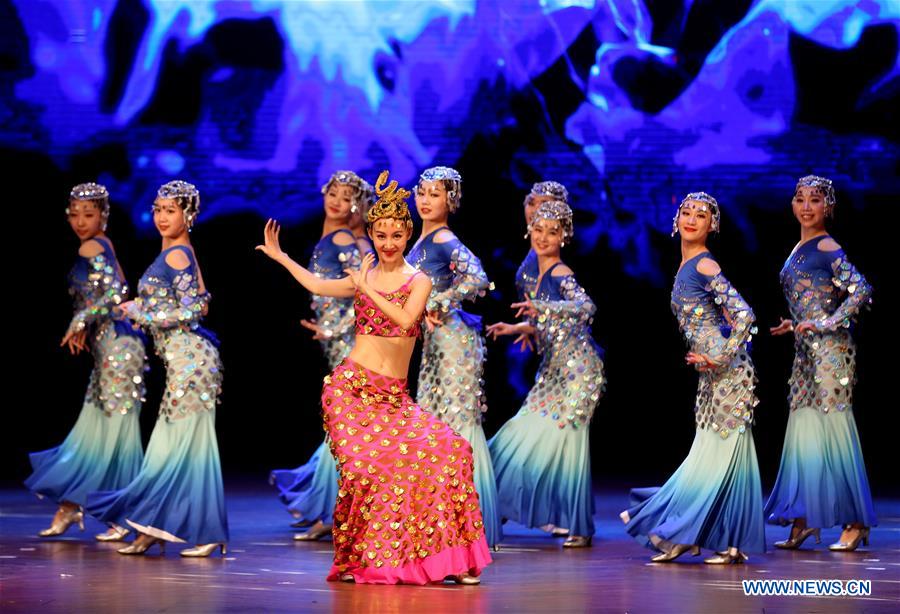Let's celebrate the Spring Festival with China
- By Rabi Sankar Bosu
 0 Comment(s)
0 Comment(s) Print
Print E-mail China.org.cn, February 4, 2019
E-mail China.org.cn, February 4, 2019

With the advent of the Spring Festival, popular name for the Chinese lunar New Year, a famous line from a great Bengali poet Subhash Mukhopadhyay comes to mind: "Whether flowers bloom or not/it's Spring today!"
Known as "Chun Jie" in Chinese, this epitomizes the exquisite beauty of Chinese culture heralding the arrival of Spring and the beginning of a new year filled with joy and fresh hope. Indeed, if there is one festival that has caught the collective attention of the world, it is this one.
Blessed with a long history and insightful culture, China has a number of unique and distinctive festivals still forming an essential part of people's daily life. With a history of more than 4,000 years, the Spring Festival is the country's largest and most ceremonious traditional festival. It is the quintessence of family unity, prosperity, joy, and sharing, all part of the universal human experience.
Celebration of the 1st day of the 1st lunar month marked by a new moon, falls on February 5 this year. This is the "Year of the Pig," the pig being the last sign in the 12-year Chinese Zodiac and regarded as a symbol of wealth and good fortune.
It's really heartening to see that traditional culture continues to play a significant role in contemporary Chinese society. Despite the onslaught of modernization and the remarkable changes in the lifestyle of Chinese people, now luxuriating in high-speed railways, e-commerce, mobile payment apps and a sharing economy, they still preserve a series of traditions with great intensity and energy.
They observe various traditions, such as rigorous house-cleaning, putting up couplets and new year paintings, making window paper cuttings, hanging up the character for happiness, setting off firecrackers to scare away evil spirits, enjoying a lunar new year eve dinner and celebrating long into the night, praying for good fortune for family members and friends, giving red envelopes filled with "lucky money," worshiping the gods and ancestors, and welcoming back the feudal Kitchen God.

Also worth mentioning is the Spring Festival travel rush, or "Chunyun," since traveling has become a modern custom during the 40-day period starting on January 21 this year, with three billion trips expected to be made by train or air. This reflects the transformation and upgrading of the domestic economy. China's economic performance in 2018 was dazzling, with a growth rate of 6.6 percent.
It can be said that today Spring Festival is no longer an occasion celebrated solely by the Chinese. It has become a global festive season thanks to the rise of China as the world's second-largest economy and the activities of Chinese enterprises abroad. Spring Festival celebrations have been gaining global popularity, reflecting the country's rising cultural prominence.
For India's Chinese expatriate community of about five to seven thousand persons, scattered across Mumbai, Kolkata, Delhi and other cities, the Spring Festival is one of the few times that brings the community together. Tangra, where Kolkata's Chinatown is located, is the hub of celebration.
On New Year's Day, the Chinese community in traditional silk costumes perform popular dragon and lion dances on the roads of Tangra and Territy Bazar with much fun and fervor. Local people also join in with great enthusiasm.

Notably, since 2010, the brand of the "Happy Chinese New Year" gala, introduced by the Chinese Ministry of Culture, has been staged around the world with a message of Chinese friendship. This year, it is estimated celebrations are being held in 396 cities in 133 countries and regions during the Spring Festival holidays.
Last year on February 12, the people of West Bengal witnessed the extravagant New Year celebrations at a Chinese cultural show in Kolkata, organized by the PRC Consulate General seeking to reinvigorate the Sino-Indian friendship.
Surely, the Happy Chinese New Year celebrations across the globe can be an excellent base for expanding cultural exchanges and enhancing understanding between China and the rest of the world. Echoing the words of "Spring" by William Blake, we chant: "Merrily, Merrily, Merrily/to welcome in the year!"
Rabi Sankar Bosu, Secretary of New Horizon Radio Listeners' Club, West Bengal, India
Opinion articles reflect the views of their authors only, not necessarily those of China.org.cn.






Go to Forum >>0 Comment(s)